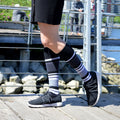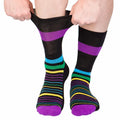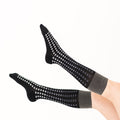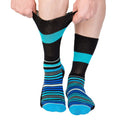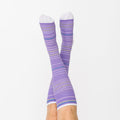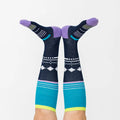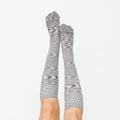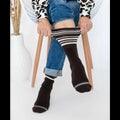What is DVT?
- DVT is a condition in which a blood clot (thrombus) forms in one or more of the deep veins in your body, usually in your legs.
- Deep vein thrombosis is a serious condition because a blood clot that has formed in your vein can break loose, travel through your bloodstream and lodge in your lungs, blocking blood flow (pulmonary embolism).
- Venous thromboembolism is the third most common vascular disease after coronary artery disease and stroke - DVT and PE are experienced by 2-5% of people during their lifetime.

Symptoms of DVT
Deep vein thrombosis can cause leg pain, but often occurs without any symptoms. Nearly 50% of all DVT cases do not have recognized symptoms, but here are some to be aware:
- Swelling in the affected leg, including swelling in your ankle and foot
- Pain in your leg; this can include pain in your ankle and foot
- The pain often starts in your calf and can feel like cramping or a charley horse
- Warmth over the affected area
- Changes in your skin color, such as turning pale, red or blue
Causes of DVT
The blood clots of deep vein thrombosis can be caused by anything that prevents your blood from circulating or clotting normally, such as injury to a vein, surgery, certain medications and limited movement.
Know the Risk Factors:
- STASIS
- Sitting for long periods of time at work or during travel
- Standing for long periods of time at work
- Prolonged Bed Rest or immobility
- TRAUMA
- Injury / Surgery
- OTHER
- Inherited blood clotting abnormalities
- Previous DVT’s and varicose veins
- Pregnancy /Birth Control Pills/Hormone Replacement Therapy
- Smoking affects blood clotting and circulation
- Obesity - Being overweight increases the pressure in the veins in your pelvis and legs.
- Malignancy - Some forms of cancer increase substances in your blood that cause your blood to clot.
Pulmonary Embolism (PE)
A serious complication associated with DVT is Pulmonary Embolism.
In most cases, a pulmonary embolism is caused by a blood clot in a deep vein in the leg that breaks loose and travels through the bloodstream to the lungs.

Symptoms of Pulmonary Embolism:
PE can be life-threatening so it is important to seek medical attention if any signs or symptoms occur.
- Shortness of breath
- Rapid breathing
- Anxiety
- Chest pain
- Pain in your shoulder, arm, neck and jaw
- Coughing or spitting up blood
- Feeling lightheaded or fainting
- Rapid heartbeat
Prevention of DVT & PE:
Measures to prevent deep vein thrombosis include:
- Avoid sitting still for long periods of time. If you're traveling a long distance by car, stop every hour or so and walk around. If you're on a plane, stand or walk every 2 hours. If you can't do that, exercise your lower legs as much as possible in your seat
- Lifestyle changes like losing weight and quitting smoking can improve blood circulation and blood clotting
- Use of compression socks or stockings to increase leg circulation and prevent blood clots
Why use Compression socks to Prevent and Treat DVT?
- Wearing compression socks reduces the risk of DVT and complications
- The pressure created by compression socks pushes fluid up the leg, which allows blood to flow freely from the legs to the heart.
- Compression stockings not only improve blood flow, they also reduce swelling and pain. They are particularly recommended for DVT because the pressure stops blood from pooling and clotting.
- Several studies show that DVT patients have a higher risk of recurrence - cumulative incidence of recurrent DVT/PE was as high as 40% after 10 years. As such, it is crucial for them to continue using their compression socks to prevent re-appearance.
Dr. Segal's Compression Socks promote leg health and reduce moderate leg swelling and pain associated with DVT. Our socks are available in several fashionable colors and prints to match your style without compromising on effectiveness. Browse our medical compression socks for men and women (20-30 mmHg). Please talk to your physician to see if this level of compression is right for you.
For those who are at higher risk of DVT and clot formations, such as frequent travelers and pregnant females, our everyday men and women’s collection (15-20mmHg) is ideal for prevention and reducing mild leg discomfort and swelling.





